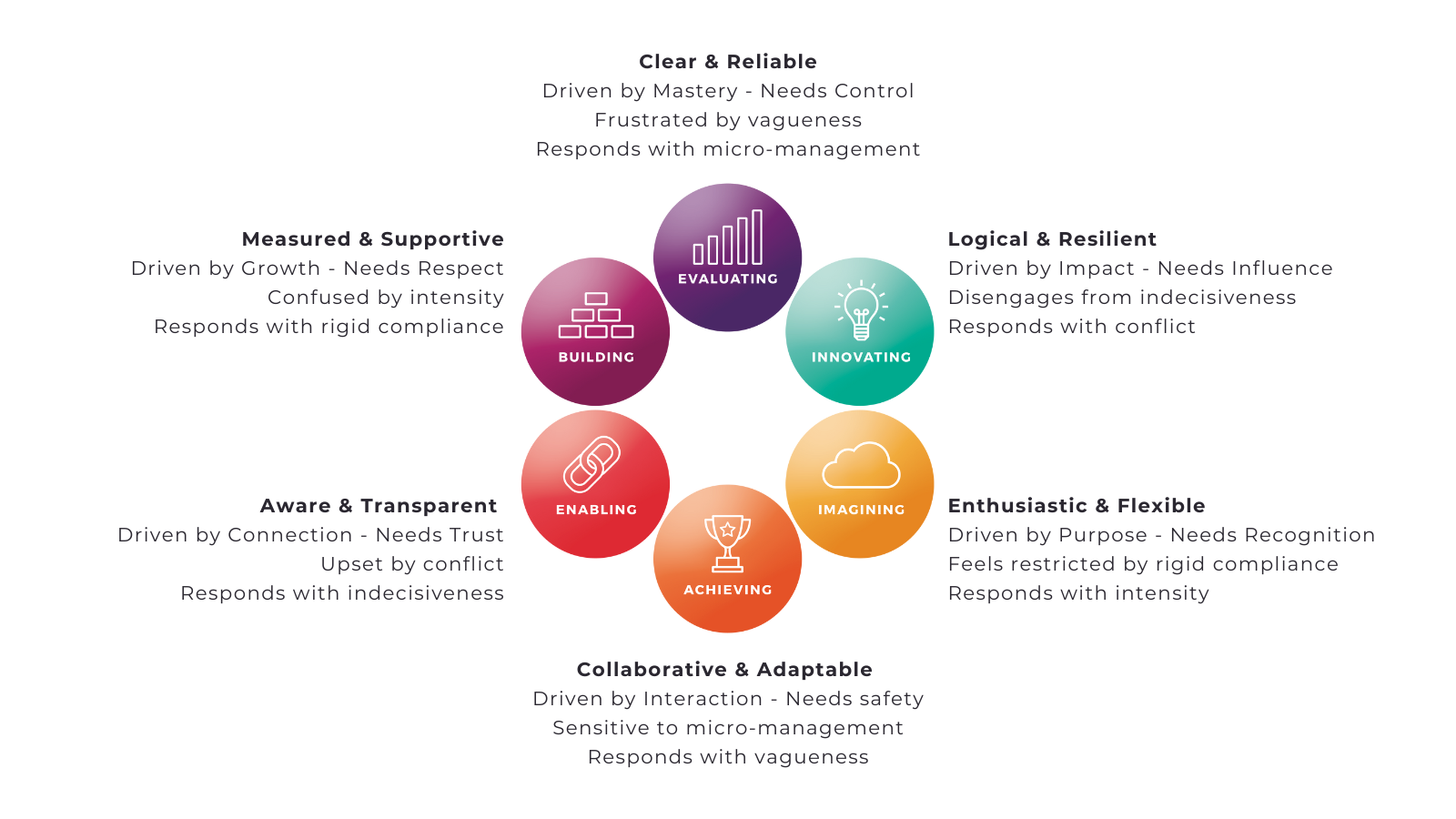A Deep Dive into Culture OS
A manifesto for Cohesion, Engagement and Performance

How do you tackle the really subtle, tricky stuff, like everyday rumbling conflict or quiet quitting?
How can you create enough engagement and alignment for concerted collective effort?
For more than two decades, I have assisted organisations with aspects of culture such as vision, leadership behaviour, storytelling, values, and intrinsic motivation. While all of these interventions are valuable, they don’t necessarily combine to create an aligned, cohesive, and forward-moving culture.
Based on all of my years of direct experience, and a well-established systems thinking process called schismogenesis, Culture OS helps leaders to address all of the factors affecting cultural alignment, all at once
It identifies the toxic business processes and behaviours that provoke teams and organisations to become dysfunctionally disconnected, and provides the antidote to realign people within a genuinely compelling culture.
It's a reliable methodology for increasing engagement, improving communication and driving sustainable high performance.
The solution, which is a blend of consulting, training, and coaching, is described on the web page here. This article dives a little deeper into the descriptions of the problem and the solution.
Understanding the problem
In nearly all cases, dysfunction is made possible by ignoring nuance and applying broad-brush judgements.
That may be simplistic metrics that drive tunnel visioned behaviour, generalised solutions that do not work in specific cases, polarised judgements that categorise people as good or bad, right or wrong, in-group or out-group.
People in boardrooms often try to look after most people’s best interests, but the detached, top-down nature of the thinking lacks sensitivity to actual reality, causing unwanted bottom-up behaviour.
There are three offending behaviours that are most likely to lead to cultural problems. Different versions of these three patterns play out in every level of collective behaviour, from your family or friendship group all the way up to the society you live in.
1. Metrics That Mislead
Metrics are often used to drive performance in a timely fashion, setting targets and encouraging healthy competition. Great. We need metrics. We need data. We need to balance the books. We need people to pay attention to numbers. But…
If the business is run solely in this way, people focus on achieving the target regardless of other considerations. People’s responsibilities may be broad, but they will focus on what is measured, acknowledged and rewarded.
When competition becomes the primary focus, people behave more and more aggressively to win. Eventually, paying attention solely to the competitive metric distracts us from our true objectives.
A good example would be an escalating arms race where both sides have enough weapons to destroy the world multiple times, yet continue to manufacture more. Competitive city traders make money betting on the failure of their own financial systems, when their financial minds could be put to work in more helpful ways. We also race to the bottom: Competing businesses can get locked in a price war where everyone discounts until nobody is making any money.
It’s like playing tennis and watching the scoreboard, not the ball.
Generalised metrics are also dangerous. If you are the national or global head of a function, you will make data-led decisions to achieve your overall objectives that do not work locally.
Paying focused attention to a metric without sensitivity to nuance yields unwanted behaviour at every level.
2. Polarisation in Teams
We are all different. We have different ways of working, different priorities and often different objectives. In teams and cultures, differences are a superpower; they eliminate blind spots, provoke more diverse questions, and lead to better answers, but misunderstood differences are kryptonite.
Below are examples of everyday differences in TEMPEREMENTS, which, when misunderstood, can lead to dysfunction. Each behaviour polarises the other to create a perfect storm of more and more extreme behaviours:

I worked with leadership teams that could never align because some were driven by measurement and clarity of outputs, while others were motivated by speed and effectiveness of outcomes; it was measurement versus agility. Over time, the team became increasingly unable to communicate.
Misalignment fosters adversarial perceptions, polarised opinions, and irrational reactions. What begins as minor differences becomes magnified, leading to bandwagons, echo chambers, and ingroup/outgroup behaviour. Once the schism appears, people take sides, strengthening some connections and damaging others until effective communication breaks down.
3. Quiet Quitting
Lack of a compelling vision for the immediate future leads to Quiet Quitting Behaviours.
The technical term for quiet quitting is ‘systems holdback’. It occurs when individuals withhold contributions or reduce effort because they believe others are doing so, leading to collective disengagement. It’s like the sucker principle in psychology - nobody wants to be the fool doing all the work, so everyone does less and less.
It’s how we end up in a situation where everyone looks fully utilised, but very little is achieved. Hybrid working conditions, which are great in many ways, can fuel the cultural detachment and individualism that contribute to ‘holdback’.
The cause is usually a blend of the three, but the consequence is the same: it becomes increasingly difficult to create any kind of engaged, motivated, collective effort.
The Solutions
Vision
Cultural disengagement is overcome by establishing a compelling cultural vision, a game that everyone genuinely wants to play.
Creating a compelling vision is not the same as defining a long-term business objective in management speak, and it can’t be canvassed from popular opinion. It needs to be ambitious, articulated with conviction, and described with enough emotional appeal to evoke intrinsic motivation.
For a critique of vision statements and how they work, please check out this article.
Cultural OS creates a compelling vision:
- Uncovering the aspirations of leadership
- Authoring a vision statement with imaginative and emotional appeal
- Designing iconic actions and environmental influences
- Developing leaders’ storytelling abilities
Values
When we are in a team or organisational culture that reflects our values and motives, it’s very easy to generate the energy to contribute to it.
The opposite is also true. That’s why having different cultures within the organisation cannot create the positive energy required for universal effort. We need to all feel a sense of belonging to the collective. When we are not aligned in terms of values, we feel we don't belong, and we quietly quit.
Yet, in most organisations that have an explicit list of values, most people within those organisations cannot remember them all, and even if they can, the values are some abstract words that the individuals do not link to their personal experience.
Cultural OS makes values real and sticky:
- Condense values to three memorable statements
- Define the extremes of each value - too much / too little
- Help individuals to map values into their own motives and behaviours
- Capture everyday anecdotes that demonstrate values
Perspective
The difference that can divide us can also make us stronger.
When differences are understood, embraced, and valued, connection can be maintained, enabling us to communicate effectively and share the benefits of diverse perspectives. This understanding can be initiated through explorations such as workshop activities but is sustained through ritual.
Cultural OS uses TEMPERAMENTS as the tool to overcome misunderstanding.
Organisations need to create the space for people to converse and co-create a narrative. We have all been subjected to organised fun that feels forced and inauthentic. It’s not about the mini golf, karaoke or cocktail making; it’s about the opportunity for work-related interactions without structured agendas, allowing topics to open up and cooperative relationships to develop.
Whether it's water cooler moments in the office, a fun event, or an online activity, people need space to converse and commune. Without it, culture has no oxygen.
Cultural OS increases perspective:
- Develop self-awareness using diagnostics and workshop activities
- Frame communication with the intention to prevent misunderstanding
- Structure meetings, stand-ups and presentations to include context.
Feedback
Many cultural problems can be ‘nipped in the bud’ when individuals can deliver and receive feedback in all directions. The communication difficulties that damage working relationships are often to be found in the undaid stuff. Clear and positive communication leaves little room for misunderstanding, defensiveness or reluctance.
Feedback is the lifeblood of an aligned culture, yet many businesses handle it poorly. For the unskilled people leader, giving feedback can be interpersonally uncomfortable, leading to two possible behaviours: they may overformalize the process, making it cold and unpleasant, or they may be too informal, resulting in ambiguity and confusion.
Skilful feedback conversations are essential to maintain alignment and performance.
For a detailed overview of this ethos, please check out this article.
Cultural OS coaches:
- Managing expectations and eliminating misunderstanding
- Receiving feedback in a growth mindset
- Collaborative approaches to problem solving, performance improvement and behaviour change
Trust
Trust is an essential ingredient for an authentically connected culture. Government research indicates that high trust environments report 76% higher engagement, 50% fewer sick days, and 74% less stress.
Trust also affects performance dramatically. McKinsey & Company reports that high-trust teams are 3.3 times more efficient and 5.1 times more likely to meet performance goals.
Trust is eroded by competition or self-interest, both of which are fuelled by individual reward systems. At the same time, team-based rewards promote trust, cohesiveness, and mutual support.
When a group focuses more on the quality of what they are actually doing, and less on broader comparisons and competitions, competitive dysfunction is less likely to spiral out of control. We all want to be competent and raise the bar, so how can people’s attention be guided toward their own development journey, rather than measuring themselves against others? Teams achieve by focusing on the collective result, and even individual competitors who achieve at the highest level do so by running their own race or playing their best game.
Culture OS consults with leaders to create trust and cohesion:
- Changing metrics to reward individual and collective achievement.
- Decentralising control of operational decisions.
- Revising leadership dashboards to prevent micro-management by the minute.
- Development journeys and succession planning.
- Developmental delegation and leadership.










